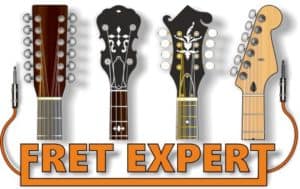This might seem a rather unusual question to a lot of people, but there are specific circumstances where you may wish to tone down your banjo a little.
Even if having a ‘normal’ volume of banjo isn’t an issue right now, you ought to learn how to quieten your banjo for these popular reasons:
- To be able to comfortably fit in with other singers and musicians who are playing acoustically. The banjo is a naturally loud instrument due to the head and resonator (found on many models). To give an example, if you’re playing with an acoustic guitar player, the banjo tends to drown out all but the biggest jumbo or dreadnought models.
- During a recording session, you may want a slightly drier sound on your banjo track. You can always add a touch of reverb later, but you can’t take it away if it’s an intrinsic part of the instrument’s natural resonance.
- Living somewhere (even temporarily, like a hotel room) with thin walls, where you can easily make a nuisance of yourself by practicing at full volume!
So, we’re faced with a naturally loud instrument, without an obvious way to subdue its naturally exuberant tendencies! The solution is surprisingly simple and probably doesn’t occur to most people until they’re pointed in the right direction.
How to Quieten or Mute Your Banjo
This same method can be used on virtually any type of banjo, including 5-string, tenor, plectrum, 6-string guitar-banjo (also called a ganjo or guitjo), banjolele (or banjo ukulele) and mandolin-banjo (or banjoline).
The first thing you need to do is to remove the resonator from the back of your instrument if you have a resonator or closed-back model. Many people will never have carried out this simple procedure before, but in reality, it takes little more than a minute in most circumstances.
On the front of the banjo, spaced at specific intervals near to the outside rim of the body (or pot), you should find around four threaded retaining thumb screws.
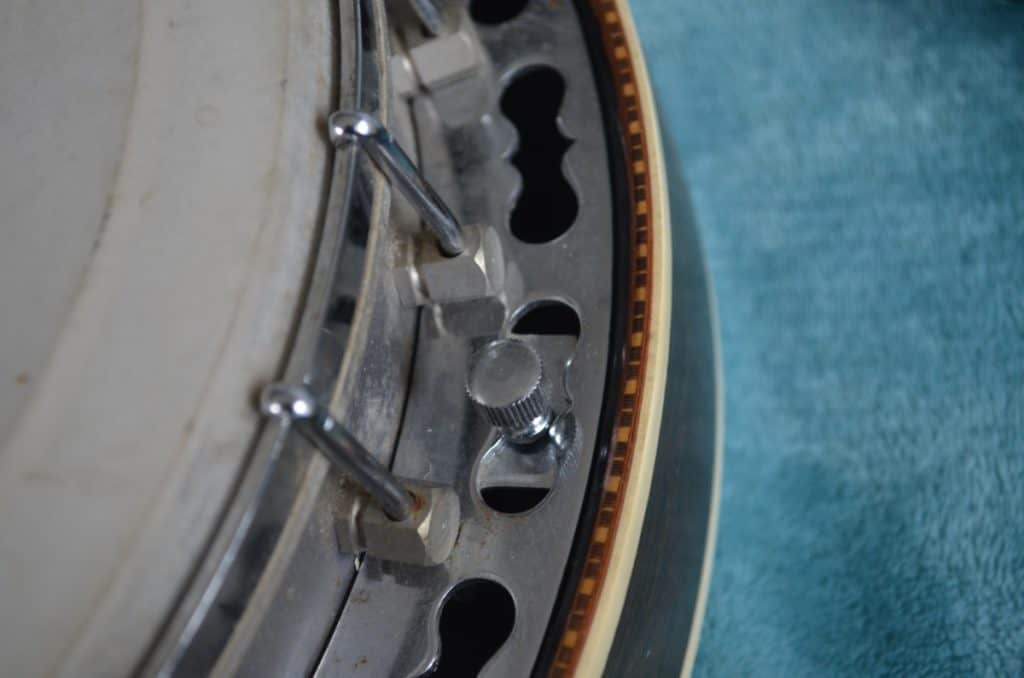
Remove these by turning anti-clockwise and put them in a safe place!
In the case of some banjoleles, you may find the resonator is held in place by simple Phillips slotted screws, so you may need a screwdriver for that type of instrument.
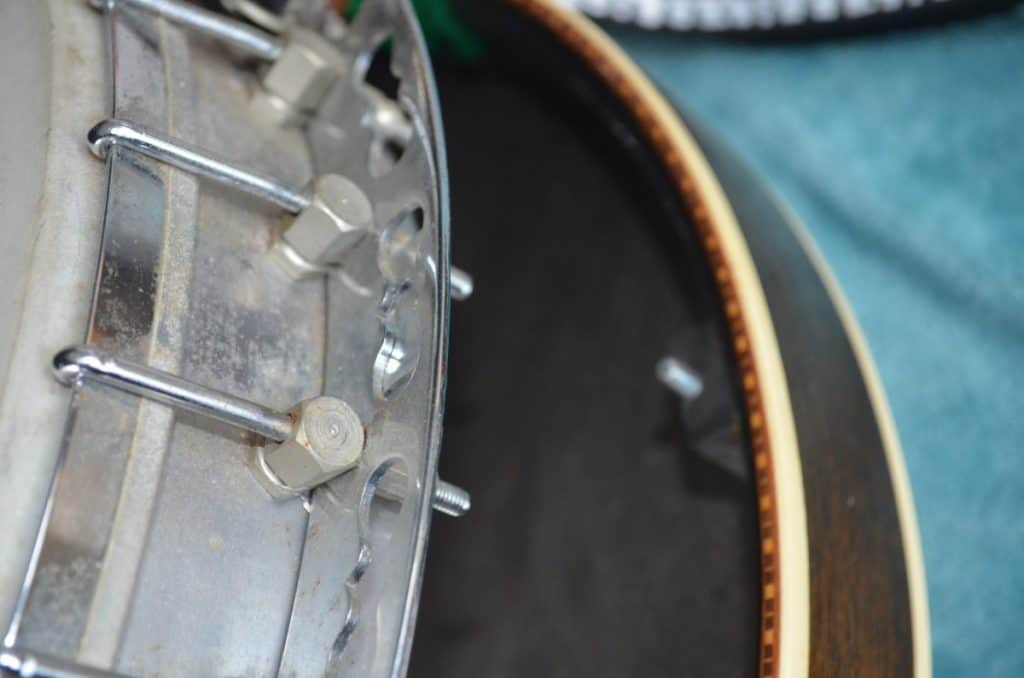
Whichever model you have, the resonator should now happily detach from the body. Put this to one side.
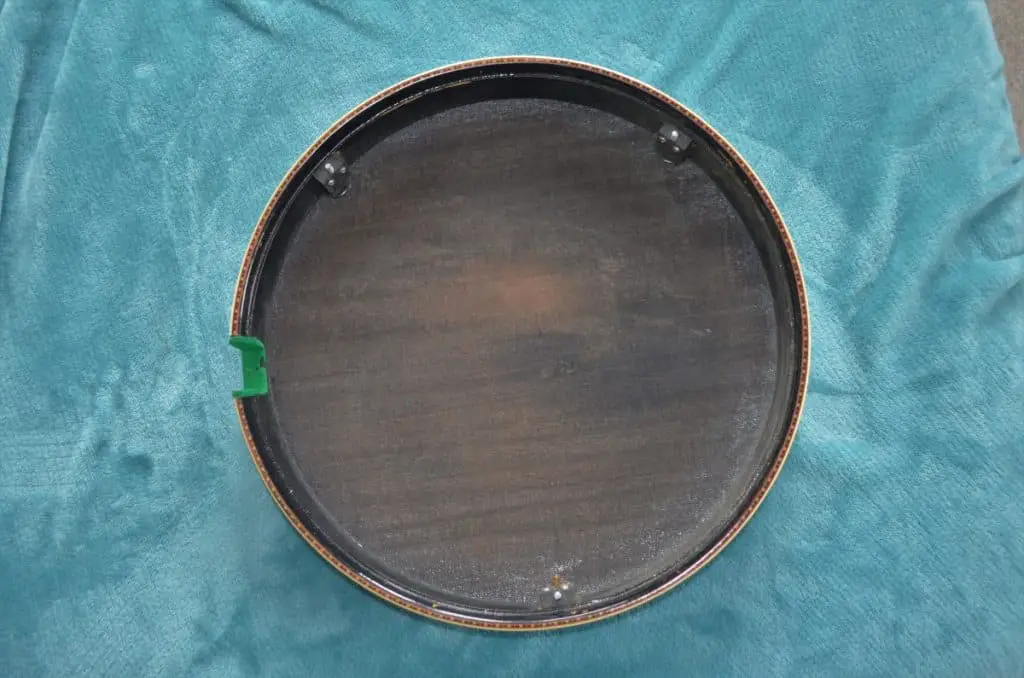
Now turn your banjo over and you should see one or two thin metal coordinator rods running the length of the pot.
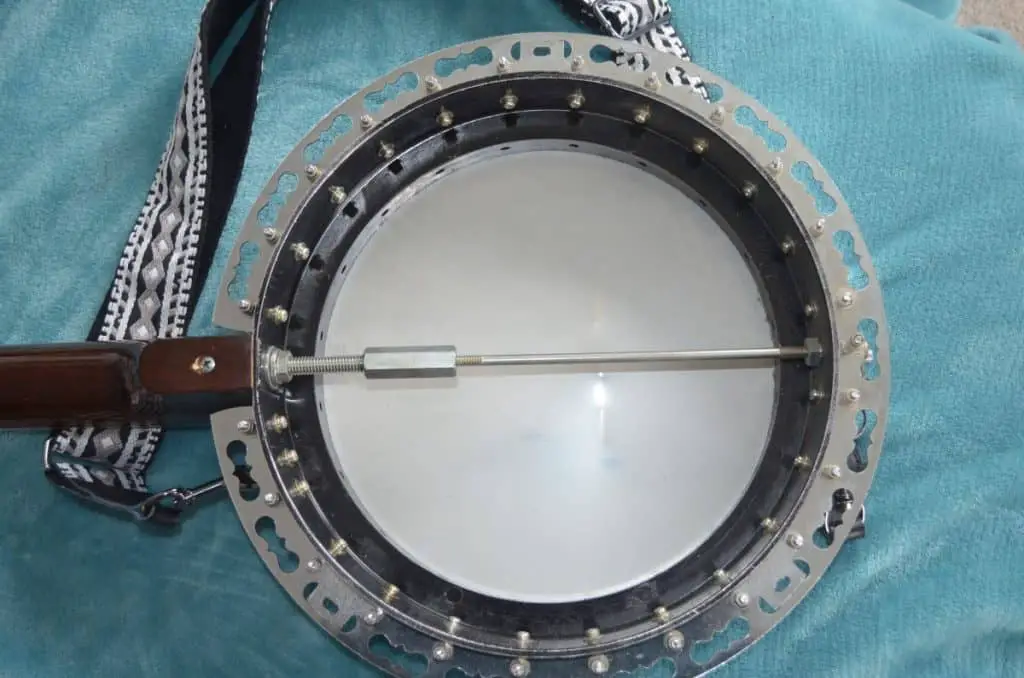
Players of open-back models will be very familiar with these as you’ll be met with those when you first get delivery of your open-back banjo. Older banjos may have wooden bars, rather than metal rods.
The next part of the jigsaw applies equally to both resonator closed-back and open-back models. Even though open-backs are quieter than their closed-back siblings, the comparison is fairly loud versus much louder, rather than possessing a more significant difference in volume.
Now comes the fun bit where you search around the house for a likely garment or piece of damping material to stuff between the coordinator rod/s and the banjo head. This can be an old sweater, a shirt with a hole in the sleeve or even piece of foam rubber from an old chair cushion, for example. Try experimenting with different types of material until you find the right one for damping down the sound of your instrument.
Try to avoid materials such as silk and satin as they don’t possess great damping qualities – Natural fibers are generally best.
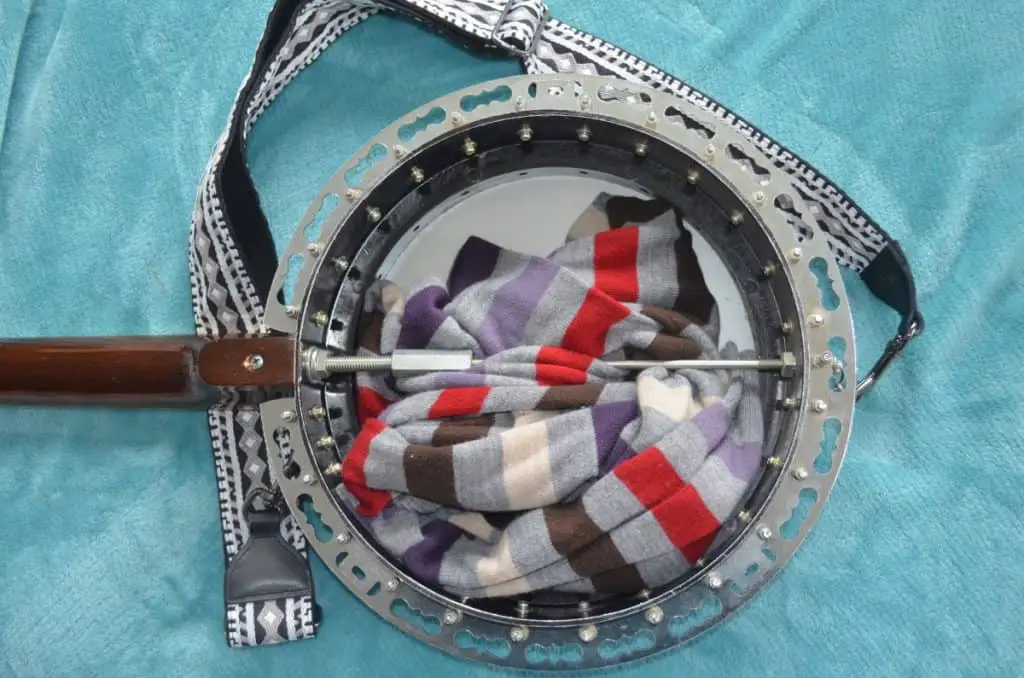
The way this works is it stops the head from resonating against the body and hoop of the banjo. To give a similar example, it’s like putting your hand flat on a drum head and then hitting the head with a drumstick. It will sound dull and unresponsive. In the case of the banjo, this is the effect you’re trying to achieve.
Now, it’s your choice of whether or not to replace the resonator. If you tend to play your banjo standing up, using a strap, then this is fine. If, on the other hand, you prefer sitting while playing your instrument, you may find the thin metal rim can start to dig into your legs, which can get quite uncomfortable after a few minutes.
You can of course use a flat cushion or piece of foam rubber to make this more bearable. Open-back models don’t have this problem, as they’re designed differently, with a much wider rim on the pot.
A lot of people just put the resonator back, remembering not to use a favorite garment as you’re likely to forget where it’s gone! Also, don’t use your spouse or partner’s expensive piece of designer clothing without permission, as you may find you and your banjo out the door!
Even if you haven’t got an issue with the volume of your instrument with regard to thin walls or difficult neighbors, it’s often a case of preferring the gentler sound from a lightly muted instrument. Converting the instrument back to its original form is just a matter of reversing the process – a two minute job in most cases.
Pro Tip: If you’re likely to be carrying out this change on a fairly frequent basis, it’s a good idea to attach a little pick pouch to your banjo strap to put the thumb screws in. Losing thumb screws is not exactly an event this writer is totally unfamiliar with!
If you’re doing the same thing with the Philips screws from some banjoleles, always use the right size of screwdriver head, or frequent screwing and unscrewing will, in all likelihood, gradually degrade the slots in the screw head.
I should also point out at this juncture that there are specific muting devices and dampers for your banjo, but in my opinion, these rather kill the sound of the strings, but can be useful if you just want to practice technique, rather than produce a pleasant useable tone from your instrument.
Good luck with this simple fix! It should make an appreciable difference to the projection of your banjo. You should also still be receiving Christmas cards and friendly visits from relieved neighbors!
